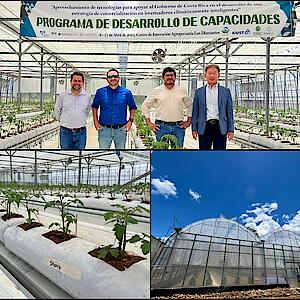CABEI and Nicaragua sign loan to improve living conditions in the country's rural area

The NICAVIDA Project will give priority to 37 municipalities in the Nicaraguan dry corridor including León, Chinandega, Managua, Boaco, Matagalpa, Estelí, Nueva Segovia and Madriz.
Managua, May 9, 2017. - The Central American Bank for Economic Integration (CABEI) and the Government of Nicaragua signed a US$15.0 million loan contract to finance the Project denominated, “Development of Sustainable Livelihoods for Rural Families in the Dry Corridor of Nicaragua (NICAVIDA).”
It is estimated that the project will benefit 30,000 rural families and approximately 152 thousand inhabitants of Nicaragua's dry corridor, including families dedicated to subsistence or self-consumption agriculture, family agriculture in transition, commercial family agriculture and rural families without land. Priority will be given to 37 municipalities of the Nicaraguan dry corridor including León, Chinandega, Managua, Boaco, Matagalpa, Estelí, Nueva Segovia and Madriz.
The project’s total cost is US$48.5 million, US$20.5 million of which is financed by the International Fund for Agricultural Development (IFAD) (42.3% of the total); CABEI provided US$15.0 million (30.9% of the total), the beneficiaries contributed US$7.0 million (14.4% of the total) and the Government of Nicaragua gave US$6.0 million (12.4% of the total).
At the same event, a US$283,250.0 technical cooperation agreement was signed to carry out feasibility studies for the Project denominated, “Conversion of the Leon II, La Paz Centro and Nagarote Sub-stations to 138 kilovolts and Construction of 138 kilovolt Transmission Lines between said Substations.” Once the studies are completed, a project could be prepared with a total investment greater than US$30.0 million, which could also be financed by CABEI.
The abovementioned project seeks to resolve the limitations of the National Interconnected System (SIN) in a number of transmission line sections, which operate at 69 kilovolts, by improving the transfers through the regional distribution network, as well as converting the abovementioned Sub-stations.












